-
EXECUTIVE SUMMARY
-
MARKET ATTRACTIVENESS ANALYSIS
- GLOBAL LITHIUM-ION BATTERY MARKET, BY TYPE
- GLOBAL LITHIUM-ION BATTERY MARKET, BY POWER CAPACITY
- GLOBAL LITHIUM-ION BATTERY MARKET, BY VOLTAGE
- GLOBAL LITHIUM-ION BATTERY MARKET, BY END USER
- GLOBAL LITHIUM-ION BATTERY MARKET, BY REGION
-
MARKET INTRODUCTION
-
DEFINITION
-
SCOPE OF THE STUDY
-
MARKET STRUCTURE
-
RESEARCH METHODOLOGY
-
RESEARCH PROCESS
-
PRIMARY RESEARCH
-
SECONDARY RESEARCH
-
MARKET SIZE ESTIMATION
-
TOP DOWN & BOTTOM-UP APPROACH
-
FORECAST MODEL
-
LIST OF ASSUMPTIONS
-
MARKET INSIGHTS
-
MARKET DYNAMICS
-
INTRODUCTION
-
DRIVERS
- INCREASING PENETRATION INTO LARGE APPLICATIONS
- GROWING DEMAND FOR HIGH POWER AND HIGH CAPACITY LITHIUM-ION BATTERIES IN ELECTRIC VEHICLES
- DRIVERS IMPACT ANALYSIS
-
RESTRAINTS
- HIGH PRICE OF LITHIUM-ION BATTERIES
- RESTRAINTS IMPACT ANALYSIS
-
OPPORTUNITIES
- GROWING APPLICATIONS IN THE ENERGY SECTOR
-
IMPACT ANALYSIS OF COVID-19 ON LITHIUM-ION BATTERY MARKET
- IMPACT ON OVERALL LITHIUM-ION BATTERY INDUSTRY
- IMPACT ON SUPPLY CHAIN OF LITHIUM-ION BATTERY
- IMPACT ON MARKET DEMAND OF LITHIUM-ION BATTERY
- IMPACT ON PRICING OF LITHIUM-ION BATTERY
-
MARKET FACTOR ANALYSIS
-
SUPPLY/VALUE CHAIN ANALYSIS
- DESIGN & DEVELOPMENT
- RAW MATERIAL/ COMPONENT SUPPLY
- MANUFACTURING & ASSEMBLY
- SALES & DISTRIBUTION
- END-USERS
-
PORTER’S FIVE FORCES MODEL
- THREAT OF NEW ENTRANTS
- BARGAINING POWER OF SUPPLIERS
- BARGAINING POWER OF BUYERS
- THREAT OF SUBSTITUTES
- INTENSITY OF RIVALRY
-
GLOBAL LITHIUM-ION BATTERY MARKET, BY TYPE
-
OVERVIEW
-
LITHIUM NICKEL MANGANESE COBALT
- LITHIUM NICKEL MANGANESE COBALT: MARKET ESTIMATES & FORECAST, BY REGION/COUNTRY, 2024-2032
-
LITHIUM IRON PHOSPHATE
- LITHIUM IRON PHOSPHATE: MARKET ESTIMATES & FORECAST, BY REGION/COUNTRY, 2024-2032
-
LITHIUM COBALT OXIDE
- LITHIUM COBALT OXIDE: MARKET ESTIMATES & FORECAST BY REGION/COUNTRY, 2024-2032
-
LITHIUM TITANATE OXIDE
- LITHIUM TITANATE OXIDE: MARKET ESTIMATES & FORECAST BY REGION/COUNTRY, 2024-2032
-
LITHIUM MANGANESE OXIDE
- LITHIUM MANGANESE OXIDE: MARKET ESTIMATES & FORECAST BY REGION/COUNTRY, 2024-2032
-
LITHIUM NICKEL COBALT ALUMINUM OXIDE
- LITHIUM NICKEL COBALT ALUMINUM OXIDE: MARKET ESTIMATES & FORECAST BY REGION/COUNTRY, 2024-2032
-
GLOBAL LITHIUM-ION BATTERY MARKET, BY POWER CAPACITY
-
OVERVIEW
-
UP TO 3,000 MAH
- UP TO 3,000 MAH: MARKET ESTIMATES & FORECAST BY REGION/COUNTRY, 2024-2032
-
3,000 MAH-10,000 MAH
- 3,000 MAH-10,000 MAH: MARKET ESTIMATES & FORECAST BY REGION/COUNTRY, 2024-2032
-
10,000 MAH-60,000 MAH
- 10,000 MAH-60,000 MAH: MARKET ESTIMATES & FORECAST BY REGION/COUNTRY, 2024-2032
-
ABOVE 60,000 MAH
- ABOVE 60,000 MAH: MARKET ESTIMATES & FORECAST BY REGION/COUNTRY, 2024-2032
-
GLOBAL LITHIUM-ION BATTERY MARKET, BY VOLTAGE
-
OVERVIEW.
-
UP TO 12V
- UP TO 12V: MARKET ESTIMATES & FORECAST BY REGION/COUNTRY, 2024-2032
-
12V-36V
- 12V-36V: MARKET ESTIMATES & FORECAST BY REGION/COUNTRY, 2024-2032
-
ABOVE 36V
- ABOVE 36V: MARKET ESTIMATES & FORECAST BY REGION/COUNTRY, 2024-2032
-
GLOBAL LITHIUM-ION BATTERY MARKET, BY END USER
-
OVERVIEW
-
AEROSPACE
- AEROSPACE: MARKET ESTIMATES & FORECAST BY REGION/COUNTRY, 2024-2032
-
MOBILITY / RECREATIONAL
- MOBILITY / RECREATIONAL: MARKET ESTIMATES & FORECAST BY REGION/COUNTRY, 2024-2032
-
MARINE
- MARINE: MARKET ESTIMATES & FORECAST BY REGION/COUNTRY, 2024-2032
-
POWER TOOLS
- POWER TOOLS: MARKET ESTIMATES & FORECAST BY REGION/COUNTRY, 2024-2032
-
LAWN AND GARDEN
- LAWN AND GARDEN: MARKET ESTIMATES & FORECAST BY REGION/COUNTRY, 2024-2032
-
E-BIKES/SCOOTERS
- E-BIKES/SCOOTERS: MARKET ESTIMATES & FORECAST BY REGION/COUNTRY, 2024-2032
-
SMALL EV’S (GOLF CARTS, FORKLIFTS, DELIVERY VEHICLES)
- SMALL EV’S (GOLF CARTS, FORKLIFTS, DELIVERY VEHICLES): MARKET ESTIMATES & FORECAST BY REGION/COUNTRY, 2024-2032
-
ENERGY STORAGE
- ENERGY STORAGE: MARKET ESTIMATES & FORECAST BY REGION/COUNTRY, 2024-2032
-
MOTORCYCLES
- MOTORCYCLES: MARKET ESTIMATES & FORECAST BY REGION/COUNTRY, 2024-2032
-
DRONE
- DRONE: MARKET ESTIMATES & FORECAST BY REGION/COUNTRY, 2024-2032
-
OTHERS
- OTHERS: MARKET ESTIMATES & FORECAST BY REGION/COUNTRY, 2024-2032
-
GLOBAL LITHIUM-ION BATTERY MARKET, BY REGION
-
OVERVIEW
-
NORTH AMERICA
- U.S.
- CANADA
- MEXICO
-
EUROPE
- GERMANY
- FRANCE.
- U.K.
- SPAIN
- ITALY
- REST OF EUROPE
-
ASIA PACIFIC
- CHINA
- INDIA
- JAPAN
- SOUTH KOREA
- AUSTRALIA
- REST OF ASIA PACIFIC
-
SOUTH AMERICA
- BRAZIL
- ARGENTINA
- REST OF SOUTH AMERICA
-
MIDDLE EAST & AFRICA
- SAUDI ARABIA
- UAE
- SOUTH AFRICA
- REST OF MIDDLE EAST & AFRICA
-
COMPETITIVE LANDSCAPE
-
COMPETITIVEOVERVIEW
-
COMPETITIVE BENCHMARKING
-
MARKET SHARE ANALYSIS
-
KEY DEVELOPMENTS & GROWTH STRATEGIES
- NEW PRODUCT LAUNCH/SERVICE DEPLOYMENT
- MERGER & ACQUISITION
- JOINT VENTURES
-
COMPANY PROFILES
-
HITACHI, LTD
- COMPANY OVERVIEW
- FINANCIAL OVERVIEW
- PRODUCTS OFFERINGS
- KEY DEVELOPMENTS
- SWOT ANALYSIS
- KEY STRATEGIES
-
JOHNSON CONTROLS
- COMPANY OVERVIEW
- FINANCIAL OVERVIEW
- PRODUCTS OFFERINGS
- KEY DEVELOPMENTS
- SWOT ANALYSIS
-
LITHIUM WERKS
- COMPANY OVERVIEW
- FINNACIAL OVERVIEW
- PRODUCTS OFFERINGS
- KEY DEVELOPMENTS
- SWOT ANALYSIS
- KEY STRATEGIES
-
PANASONIC CORPORATION
- COMPANY OVERVIEW
- FINANCIAL OVERVIEW
- PRODUCTS OFFERINGS
- KEY DEVELOPMENTS
- SWOT ANALYSIS
- KEY STRATEGIES
-
LG CHEM
- COMPANY OVERVIEW
- FINANCIAL OVERVIEW
- PRODUCTS OFFERINGS
- KEY DEVELOPMENTS
- SWOT ANALYSIS
-
SAMSUNG SDI CO LTD
- COMPANY OVERVIEW
- FINANCIAL OVERVIEW
- PRODUCTS OFFERINGS
- KEY DEVELOPMENTS
- SWOT ANALYSIS
-
TOSHIBA CORPORATION
- COMPANY OVERVIEW
- FINANCIAL OVERVIEW
- PRODUCTS OFFERINGS
- KEY DEVELOPMENTS
- SWOT ANALYSIS
-
GS YUASA LITHIUM POWER
- COMPANY OVERVIEW
- FINANCIAL OVERVIEW
- PRODUCTS OFFERINGS
- KEY DEVELOPMENTS
- SWOT ANALYSIS
-
BYD CO LTD
- COMPANY OVERVIEW
- FINANCIAL OVERVIEW
- PRODUCTS OFFERINGS
- KEY DEVELOPMENTS
- SWOT ANALYSIS
-
SONY CORPORATION
- COMPANY OVERVIEW
- FINANCIAL OVERVIEW
- PRODUCTS OFFERINGS
- SWOT ANALYSIS
-
A123 SYSTEMS LLC
- COMPANY OVERVIEW
- PRODUCTS OFFERINGS
- SWOT ANALYSIS
- KEY STRATEGIES
-
AESC (AUTOMOTIVE ENERGY SUPPLY CORPORATION)
- COMPANY OVERVIEW
- PRODUCTS OFFERINGS
- KEY DEVELOPMENTS
- SWOT ANALYSIS
-
BEIJING PRIDE POWER (BPP)
- COMPANY OVERVIEW
- SWOT ANALYSIS
-
BAK GROUP
- COMPANY OVERVIEW
- SWOT ANALYSIS
-
LI-TEC BATTERY GMBH
- COMPANY OVERVIEW
- SWOT ANALYSIS
-
APPENDIX
-
REFERENCES
-
RELATED REPORTS
-
-
LIST OF TABLES
-
LIST OF ASSUMPTIONS
-
GLOBAL LITHIUM-ION BATTERY MARKET ESTIMATES & FORECAST, BY TYPE, 2024-2032 (USD BILLION)
-
LITHIUM NICKEL MANGANESE COBALT MARKET ESTIMATES & FORECAST, BY REGION, 2024-2032 (USD BILLION)
-
LITHIUM IRON PHOSPHATE ESTIMATES & FORECAST, BY REGION, 2024-2032 (USD BILLION)
-
LITHIUM COBALT OXIDE MARKET ESTIMATES & FORECAST, BY REGION, 2024-2032 (USD BILLION)
-
LITHIUM TITANATE OXIDE MARKET ESTIMATES & FORECAST, BY REGION, 2024-2032 (USD BILLION)
-
LITHIUM MANGANESE OXIDE MARKET ESTIMATES & FORECAST, BY REGION, 2024-2032 (USD BILLION)
-
LITHIUM NICKEL COBALT ALUMINUM OXIDE MARKET ESTIMATES & FORECAST, BY REGION, 2024-2032 (USD BILLION)
-
GLOBAL LITHIUM-ION BATTERY MARKET ESTIMATES & FORECAST, BY POWER CAPACITY, 2024-2032 (USD BILLION)
-
UP TO 3,000 MAH MARKET ESTIMATES & FORECAST, BY REGION, 2024-2032 (USD BILLION)
-
3,000 MAH-10,000 MAH MARKET ESTIMATES & FORECAST, BY REGION, 2024-2032 (USD BILLION)
-
10,000 MAH-60,000 MAH MARKET ESTIMATES & FORECAST, BY REGION, 2024-2032 (USD BILLION)
-
ABOVE 60,000 MAH MARKET ESTIMATES & FORECAST, BY REGION, 2024-2032 (USD BILLION)
-
GLOBAL LITHIUM-ION BATTERY MARKET ESTIMATES & FORECAST, BY VOLTAGE, 2024-2032 (USD BILLION)
-
UP TO 12V MARKET ESTIMATES & FORECAST, BY REGION, 2024-2032 (USD BILLION)
-
12V-36V MARKET ESTIMATES & FORECAST, BY REGION, 2024-2032 (USD BILLION)
-
ABOVE 36V MARKET ESTIMATES & FORECAST, BY REGION, 2024-2032 (USD BILLION)
-
GLOBAL LITHIUM-ION BATTERY MARKET ESTIMATES & FORECAST, BY END USE, 2024-2032 (USD BILLION)
-
AEROSPACE MARKET ESTIMATES & FORECAST, BY REGION, 2024-2032 (USD BILLION)
-
MOBILITY / RECREATIONAL MARKET ESTIMATES & FORECAST, BY REGION, 2024-2032 (USD BILLION)
-
MARINE MARKET ESTIMATES & FORECAST, BY REGION, 2024-2032 (USD BILLION)
-
POWER TOOLS MARKET ESTIMATES & FORECAST, BY REGION, 2024-2032 (USD BILLION)
-
LAWN AND GARDEN MARKET ESTIMATES & FORECAST, BY REGION, 2024-2032 (USD BILLION)
-
E-BIKES/SCOOTERS MARKET ESTIMATES & FORECAST, BY REGION, 2024-2032 (USD BILLION)
-
SMALL EV’S (GOLF CARTS, FORKLIFTS, DELIVERY VEHICLES) MARKET ESTIMATES & FORECAST, BY REGION, 2024-2032 (USD BILLION)
-
ENERGY STORAGE MARKET ESTIMATES & FORECAST, BY REGION, 2024-2032 (USD BILLION)
-
MOTORCYCLES MARKET ESTIMATES & FORECAST, BY REGION, 2024-2032 (USD BILLION)
-
DRONE MARKET ESTIMATES & FORECAST, BY REGION, 2024-2032 (USD BILLION)
-
OTHERS MARKET ESTIMATES & FORECAST, BY REGION, 2024-2032 (USD BILLION)
-
GLOBAL LITHIUM-ION BATTERY MARKET, BY REGION, 2024-2032(USD BILLION)
-
NORTH AMERICA: LITHIUM-ION BATTERY MARKET, BY COUNTRY, 2024-2032(USD BILLION)
-
NORTH AMERICA: LITHIUM-ION BATTERY MARKET, BY TYPE, 2024-2032(USD BILLION)
-
NORTH AMERICA: LITHIUM-ION BATTERY MARKET, BY POWER CAPACITY, 2024-2032(USD BILLION)
-
NORTH AMERICA: LITHIUM-ION BATTERY MARKET, BY VOLTAGE, 2024-2032(USD BILLION)
-
NORTH AMERICA: LITHIUM-ION BATTERY MARKET, BY END USER, 2024-2032(USD BILLION)
-
U.S.: LITHIUM-ION BATTERY MARKET, BY TYPE, 2024-2032(USD BILLION)
-
U.S.: LITHIUM-ION BATTERY MARKET, BY POWER CAPACITY, 2024-2032(USD BILLION)
-
U.S.: LITHIUM-ION BATTERY MARKET, BY VOLTAGE, 2024-2032(USD BILLION)
-
U.S.: LITHIUM-ION BATTERY MARKET, BY END USER, 2024-2032(USD BILLION)
-
CANADA: LITHIUM-ION BATTERY MARKET, BY TYPE, 2024-2032(USD BILLION)
-
CANADA: LITHIUM-ION BATTERY MARKET, BY POWER CAPACITY, 2024-2032(USD BILLION)
-
CANADA: LITHIUM-ION BATTERY MARKET, BY VOLTAGE, 2024-2032(USD BILLION)
-
CANADA: LITHIUM-ION BATTERY MARKET, BY END USER, 2024-2032(USD BILLION)
-
MEXICO: LITHIUM-ION BATTERY MARKET, BY TYPE, 2024-2032(USD BILLION)
-
MEXICO: LITHIUM-ION BATTERY MARKET, BY POWER CAPACITY, 2024-2032(USD BILLION)
-
MEXICO: LITHIUM-ION BATTERY MARKET, BY VOLTAGE, 2024-2032(USD BILLION)
-
MEXICO: LITHIUM-ION BATTERY MARKET, BY END USER, 2024-2032(USD BILLION)
-
EUROPE: LITHIUM-ION BATTERY MARKET, BY COUNTRY, 2018-2027(USD BILLION)
-
EUROPE: LITHIUM-ION BATTERY MARKET, BY TYPE, 2024-2032(USD BILLION)
-
EUROPE: LITHIUM-ION BATTERY MARKET, BY POWER CAPACITY, 2024-2032(USD BILLION)
-
EUROPE: LITHIUM-ION BATTERY MARKET, BY VOLTAGES, 2024-2032(USD BILLION)
-
EUROPE: LITHIUM-ION BATTERY MARKET, BY POWER CAPACITY, 2024-2032(USD BILLION)
-
GERMANY: LITHIUM-ION BATTERY MARKET, BY TYPE, 2024-2032(USD BILLION)
-
GERMANY: LITHIUM-ION BATTERY MARKET, BY POWER CAPACITY, 2024-2032(USD BILLION)
-
GERMANY: LITHIUM-ION BATTERY MARKET, BY VOLTAGE, 2024-2032(USD BILLION)
-
GERMANY: LITHIUM-ION BATTERY MARKET, BY END USER, 2024-2032(USD BILLION)
-
FRANCE.: LITHIUM-ION BATTERY MARKET, BY TYPE, 2024-2032(USD BILLION)
-
FRANCE.: LITHIUM-ION BATTERY MARKET, BY POWER CAPACITY, 2024-2032(USD BILLION)
-
FRANCE.: LITHIUM-ION BATTERY MARKET, BY VOLTAGE, 2024-2032(USD BILLION)
-
FRANCE: LITHIUM-ION BATTERY MARKET, BY END USER, 2024-2032(USD BILLION)
-
U.K: LITHIUM-ION BATTERY MARKET, BY TYPE, 2024-2032(USD BILLION)
-
U.K: LITHIUM-ION BATTERY MARKET, BY POWER CAPACITY, 2024-2032(USD BILLION)
-
U.K: LITHIUM-ION BATTERY MARKET, BY VOLTAGE, 2024-2032(USD BILLION)
-
U.K: LITHIUM-ION BATTERY MARKET, BY END USER, 2024-2032(USD BILLION)
-
SPAIN: LITHIUM-ION BATTERY MARKET, BY TYPE, 2024-2032(USD BILLION)
-
SPAIN: LITHIUM-ION BATTERY MARKET, BY POWER CAPACITY, 2024-2032(USD BILLION)
-
SPAIN: LITHIUM-ION BATTERY MARKET, BY VOLTAGE, 2024-2032(USD BILLION)
-
SPAIN: LITHIUM-ION BATTERY MARKET, BY END USER, 2024-2032(USD BILLION)
-
ITALY: LITHIUM-ION BATTERY MARKET, BY TYPE, 2024-2032(USD BILLION)
-
ITALY: LITHIUM-ION BATTERY MARKET, BY POWER CAPACITY, 2024-2032(USD BILLION)
-
ITALY: LITHIUM-ION BATTERY MARKET, BY VOLTAGE, 2024-2032(USD BILLION)
-
ITALY: LITHIUM-ION BATTERY MARKET, BY END USER, 2024-2032(USD BILLION)
-
REST OF EUROPE: LITHIUM-ION BATTERY MARKET, BY TYPE, 2024-2032(USD BILLION)
-
REST OF EUROPE: LITHIUM-ION BATTERY MARKET, BY POWER CAPACITY, 2024-2032(USD BILLION)
-
REST OF EUROPE: LITHIUM-ION BATTERY MARKET, BY VOLTAGE, 2024-2032(USD BILLION)
-
REST OF EUROPE: LITHIUM-ION BATTERY MARKET, BY END USER, 2024-2032(USD BILLION)
-
ASIA PACIFIC: LITHIUM-ION BATTERY MARKET, BY COUNTRY, 2024-2032(USD BILLION)
-
ASIA PACIFIC: LITHIUM-ION BATTERY MARKET, BY TYPE, 2024-2032(USD BILLION)
-
ASIA PACIFIC: LITHIUM-ION BATTERY MARKET, BY POWER CAPACITY, 2024-2032(USD BILLION)
-
ASIA PACIFIC: LITHIUM-ION BATTERY MARKET, BY VOLTAGE, 2024-2032(USD BILLION)
-
ASIA PACIFIC: LITHIUM-ION BATTERY MARKET, BY END-USERS, 2024-2032(USD BILLION)
-
CHINA: LITHIUM-ION BATTERY MARKET, BY TYPE, 2024-2032(USD BILLION)
-
CHINA: LITHIUM-ION BATTERY MARKET, BY POWER CAPACITY, 2024-2032(USD BILLION)
-
CHINA: LITHIUM-ION BATTERY MARKET, BY VOLTAGE, 2024-2032(USD BILLION)
-
CHINA: LITHIUM-ION BATTERY MARKET, BY END USER, 2024-2032(USD BILLION)
-
INDIA: LITHIUM-ION BATTERY MARKET, BY TYPE, 2024-2032(USD BILLION)
-
INDIA: LITHIUM-ION BATTERY MARKET, BY POWER CAPACITY, 2024-2032(USD BILLION)
-
INDIA: LITHIUM-ION BATTERY MARKET, BY VOLTAGE, 2024-2032(USD BILLION)
-
INDIA: LITHIUM-ION BATTERY MARKET, BY END USER, 2024-2032(USD BILLION)
-
JAPAN: LITHIUM-ION BATTERY MARKET, BY TYPE, 2024-2032(USD BILLION)
-
JAPAN: LITHIUM-ION BATTERY MARKET, BY POWER CAPACITY, 2024-2032(USD BILLION)
-
JAPAN: LITHIUM-ION BATTERY MARKET, BY VOLTAGE, 2024-2032(USD BILLION)
-
JAPAN: LITHIUM-ION BATTERY MARKET, BY END USER, 2024-2032(USD BILLION)
-
SOUTH KOREA: LITHIUM-ION BATTERY MARKET, BY TYPE, 2024-2032(USD BILLION)
-
SOUTH KOREA: LITHIUM-ION BATTERY MARKET, BY POWER CAPACITY, 2024-2032(USD BILLION)
-
SOUTH KOREA: LITHIUM-ION BATTERY MARKET, BY VOLTAGE, 2024-2032(USD BILLION)
-
SOUTH KOREA: LITHIUM-ION BATTERY MARKET, BY END USER, 2024-2032(USD BILLION)
-
AUSTRALIA: LITHIUM-ION BATTERY MARKET, BY TYPE, 2024-2032(USD BILLION)
-
AUSTRALIA: LITHIUM-ION BATTERY MARKET, BY POWER CAPACITY, 2024-2032(USD BILLION)
-
AUSTRALIA: LITHIUM-ION BATTERY MARKET, BY VOLTAGE, 2024-2032(USD BILLION)
-
AUSTRALIA: LITHIUM-ION BATTERY MARKET, BY END USER, 2024-2032(USD BILLION)
-
REST OF ASIA PACIFIC: LITHIUM-ION BATTERY MARKET, BY TYPE, 2024-2032(USD BILLION)
-
REST OF ASIA PACIFIC: LITHIUM-ION BATTERY MARKET, BY POWER CAPACITY, 2024-2032(USD BILLION)
-
REST OF ASIA PACIFIC: LITHIUM-ION BATTERY MARKET, BY VOLTAGE, 2024-2032(USD BILLION)
-
REST OF ASIA PACIFIC: LITHIUM-ION BATTERY MARKET, BY END USER, 2024-2032(USD BILLION)
-
SOUTH AMERICA: LITHIUM-ION BATTERY MARKET, BY REGION, 2024-2032(USD BILLION)
-
SOUTH AMERICA: LITHIUM-ION BATTERY MARKET, BY TYPE, 2024-2032(USD BILLION)
-
SOUTH AMERICA: LITHIUM-ION BATTERY MARKET, BY POWER CAPACITY, 2024-2032(USD BILLION)
-
SOUTH AMERICA: LITHIUM-ION BATTERY MARKET, BY VOLTAGES, 2024-2032(USD BILLION)
-
SOUTH AMERICA: LITHIUM-ION BATTERY MARKET, BY END-USER, 2024-2032(USD BILLION)
-
BRAZIL: LITHIUM-ION BATTERY MARKET, BY TYPE, 2024-2032(USD BILLION)
-
BRAZIL: LITHIUM-ION BATTERY MARKET, BY POWER CAPACITY, 2024-2032(USD BILLION)
-
BRAZIL: LITHIUM-ION BATTERY MARKET, BY VOLTAGE, 2024-2032(USD BILLION)
-
BRAZIL: LITHIUM-ION BATTERY MARKET, BY END USER, 2024-2032(USD BILLION)
-
ARGENTINA: LITHIUM-ION BATTERY MARKET, BY TYPE, 2024-2032(USD BILLION)
-
ARGENTINA: LITHIUM-ION BATTERY MARKET, BY POWER CAPACITY, 2024-2032(USD BILLION)
-
ARGENTINA: LITHIUM-ION BATTERY MARKET, BY VOLTAGE, 2024-2032(USD BILLION)
-
ARGENTINA: LITHIUM-ION BATTERY MARKET, BY END USER, 2024-2032(USD BILLION)
-
REST OF SOUTH AMERICA: LITHIUM-ION BATTERY MARKET, BY TYPE, 2024-2032(USD BILLION)
-
REST OF SOUTH AMERICA: LITHIUM-ION BATTERY MARKET, BY POWER CAPACITY, 2024-2032(USD BILLION)
-
REST OF SOUTH AMERICA: LITHIUM-ION BATTERY MARKET, BY VOLTAGE, 2024-2032(USD BILLION)
-
REST OF SOUTH AMERICA: LITHIUM-ION BATTERY MARKET, BY END USER, 2024-2032(USD BILLION)
-
MIDDLE EAST & AFRICA: LITHIUM-ION BATTERY MARKET, BY COUNTRIES, 2024-2032(USD BILLION)
-
MIDDLE EAST & AFRICA: LITHIUM-ION BATTERY MARKET, BY TYPE, 2024-2032(USD BILLION)
-
MIDDLE EAST & AFRICA: LITHIUM-ION BATTERY MARKET, BY POWER CAPACITY, 2024-2032(USD BILLION)
-
MIDDLE EAST & AFRICA: LITHIUM-ION BATTERY MARKET, BY VOLTAGE, 2024-2032(USD BILLION)
-
MIDDLE EAST & AFRICA: LITHIUM-ION BATTERY MARKET, BY END-USER, 2024-2032(USD BILLION)
-
SAUDI ARABIA: LITHIUM-ION BATTERY MARKET, BY TYPE, 2024-2032(USD BILLION)
-
SAUDI ARABIA: LITHIUM-ION BATTERY MARKET, BY POWER CAPACITY, 2024-2032(USD BILLION)
-
SAUDI ARABIA: LITHIUM-ION BATTERY MARKET, BY VOLTAGE, 2024-2032(USD BILLION)
-
SAUDI ARABIA: LITHIUM-ION BATTERY MARKET, BY END USER, 2024-2032(USD BILLION)
-
UAE: LITHIUM-ION BATTERY MARKET, BY TYPE, 2024-2032(USD BILLION)
-
UAE: LITHIUM-ION BATTERY MARKET, BY POWER CAPACITY, 2024-2032(USD BILLION)
-
UAE: LITHIUM-ION BATTERY MARKET, BY VOLTAGE, 2024-2032(USD BILLION)
-
UAE: LITHIUM-ION BATTERY MARKET, BY END USER, 2024-2032(USD BILLION)
-
SOUTH AFRICA: LITHIUM-ION BATTERY MARKET, BY TYPE, 2024-2032(USD BILLION)
-
SOUTH AFRICA: LITHIUM-ION BATTERY MARKET, BY POWER CAPACITY, 2024-2032(USD BILLION)
-
SOUTH AFRICA: LITHIUM-ION BATTERY MARKET, BY VOLTAGE, 2024-2032(USD BILLION)
-
SOUTH AFRICA: LITHIUM-ION BATTERY MARKET, BY END USER, 2024-2032(USD BILLION)
-
REST OF MIDDLE EAST & AFRICA: LITHIUM-ION BATTERY MARKET, BY TYPE, 2024-2032(USD BILLION)
-
REST OF MIDDLE EAST & AFRICA: LITHIUM-ION BATTERY MARKET, BY POWER CAPACITY, 2024-2032(USD BILLION)
-
REST OF MIDDLE EAST & AFRICA: LITHIUM-ION BATTERY MARKET, BY VOLTAGE, 2024-2032(USD BILLION)
-
REST OF MIDDLE EAST & AFRICA: LITHIUM-ION BATTERY MARKET, BY END USER, 2024-2032(USD BILLION)
-
NEW PRODUCT LAUNCH/SERVICE DEPLOYMENT
-
MERGER & ACQUISITION
-
JOINT VENTURES
-
HITACHI, LTD: PRODUCTS OFFERINGS
-
HITACHI, LTD: KEY DEVELOPMENTS
-
JOHNSON CONTROLS: PRODUCTS OFFERINGS
-
JOHNSON CONTROLS: KEY DEVELOPMENTS
-
LITHIUM WERKS: PRODUCTS OFFERINGS
-
LITHIUM WERKS: KEY DEVELOPMENTS
-
PANASONIC CORPORATION: PRODUCTS OFFERINGS
-
PANASONIC CORPORATION: KEY DEVELOPMENTS
-
LG CHEM LTD: PRODUCTS OFFERINGS
-
LG CHEM LTD: KEY DEVELOPMENTS
-
SAMSUNG SDI CO LTD COMPANY: PRODUCTS OFFERINGS
-
SAMSUNG SDI CO LTD COMPANY: KEY DEVELOPMENTS
-
TOSHIBA CORPORATION: PRODUCTS OFFERINGS
-
TOSHIBA CORPORATION: KEY DEVELOPMENTS
-
GS YUASA LITHIUM POWER COMPANY: PRODUCTS OFFERINGS
-
GS YUASA LITHIUM POWER COMPANY: KEY DEVELOPMENTS
-
BYD COMPANY LTD COMPANY: PRODUCTS OFFERINGS
-
BYD COMPANY LTD COMPANY: KEY DEVELOPMENTS
-
SONY CORPORATION: PRODUCTS OFFERINGS
-
A123 SYSTEMS LLC: PRODUCTS OFFERINGS
-
AESC: PRODUCTS OFFERINGS
-
AESC (AUTOMOTIVE ENERGY SUPPLY CORPORATION): KEY DEVELOPMENTS
-
-
LIST OF FIGURES
-
MARKET SYNOPSIS
-
MARKET ATTRACTIVENESS ANALYSIS: GLOBAL LITHIUM-ION BATTERY MARKET
-
GLOBAL LITHIUM-ION BATTERY MARKET ANALYSIS BY TYPE
-
GLOBAL LITHIUM-ION BATTERY MARKET ANALYSIS BY POWER CAPACITY
-
GLOBAL LITHIUM-ION BATTERY MARKET ANALYSIS BY VOLTAGE
-
GLOBAL LITHIUM-ION BATTERY MARKET ANALYSIS BY END USER
-
GLOBAL LITHIUM-ION BATTERY MARKET ANALYSIS BY REGION
-
GLOBAL LITHIUM-ION BATTERY MARKET: MARKET STRUCTURE
-
RESEARCH PROCESS OF MRFR
-
NORTH AMERICA MARKET SIZE & MARKET SHARE BY COUNTRY (2024 VS 2032)
-
EUROPE MARKET SIZE & MARKET SHARE BY COUNTRY (2024 VS 2032)
-
ASIA-PACIFIC & MARKET SHARE BY COUNTRY (2024 VS 2032)
-
MIDDLE EAST & AFRICA MARKET SIZE & MARKET SHARE BY COUNTRY (2024 VS 2032)
-
SOUTH AMERICA MARKET SIZE & MARKET SHARE BY COUNTRY (2024 VS 2032)
-
DROC ANALYSIS OF GLOBAL LITHIUM-ION BATTERY MARKET
-
DRIVERS IMPACT ANALYSIS: LITHIUM-ION BATTERY MARKET
-
RESTRAINTS IMPACT ANALYSIS: LITHIUM-ION BATTERY MARKET
-
SUPPLY / VALUE CHAIN: GLOBAL LITHIUM-ION BATTERYMARKET
-
GLOBAL LITHIUM-ION BATTERY MARKET, BY TYPE, 2021 (% SHARE)
-
GLOBAL LITHIUM-ION BATTERY MARKET, BY TYPE, 2024 TO 2032 (USD BILLION)
-
GLOBAL LITHIUM-ION BATTERY MARKET, BY POWER CAPACITY, 2021 (% SHARE)
-
GLOBAL LITHIUM-ION BATTERY MARKET, BY POWER CAPACITY, 2024 TO 2032 (USD BILLION)
-
GLOBAL LITHIUM-ION BATTERY MARKET, BY VOLTAGE, 2021 (% SHARE)
-
GLOBAL LITHIUM-ION BATTERY MARKET, BY VOLTAGE, 2024 TO 2032 (USD BILLION)
-
GLOBAL LITHIUM-ION BATTERY MARKET, BY END USER, 2021 (% SHARE)
-
GLOBAL LITHIUM-ION BATTERY MARKET, BY END USER, 2024 TO 2032 (USD BILLION)
-
GLOBAL LITHIUM-ION BATTERY MARKET, BY REGION, 2024 TO 2032(USD BILLION)
-
GLOBAL LITHIUM-ION BATTERY MARKET, BY REGION, 2021 (% SHARE)
-
NORTH AMERICA: LITHIUM-ION BATTERY MARKET SHARE, BY COUNTRY, 2021 (% SHARE)
-
EUROPE: LITHIUM-ION BATTERY MARKET SHARE, BY COUNTRY, 2021 (% SHARE)
-
ASIA PACIFIC: LITHIUM-ION BATTERY MARKET SHARE, BY COUNTRY, 2021 (% SHARE)
-
SOUTH AMERICA: LITHIUM-ION BATTERY MARKET SHARE, BY COUNTRY, 2021 (% SHARE)
-
MIDDLE EAST & AFRICA: LITHIUM-ION BATTERY MARKET SHARE, BY COUNTRY, 2021 (% SHARE)
-
BENCHMARKING OF MAJOR COMPETITORS
-
MAJOR MANUFACTURER MARKET SHARE ANALYSIS, 2020
-
HITACHI, LTD: FINANCIAL OVERVIEW SNAPSHOT
-
HITACHI, LTD: SWOT ANALYSIS
-
JOHNSON CONTROLS: FINANCIAL OVERVIEW SNAPSHOT
-
JOHNSON CONTROLS: SWOT ANALYSIS
-
LITHIUM WERKS: SWOT ANALYSIS
-
PANASONIC CORPORATION: FINANCIAL OVERVIEW SNAPSHOT
-
PANASONIC CORPORATION: SWOT ANALYSIS
-
LG CHEM LTD: FINANCIAL OVERVIEW SNAPSHOT
-
LG CHEM LTD: SWOT ANALYSIS
-
SAMSUNG SDI CO LTD COMPANY: FINANCIAL OVERVIEW SNAPSHOT
-
SAMSUNG SDI CO LTD COMPANY: SWOT ANALYSIS
-
TOSHIBA CORPORATION: FINANCIAL OVERVIEW SNAPSHOT
-
TOSHIBA CORPORATIONSSS: SWOT ANALYSIS
-
GS YUASA LITHIUM POWER COMPANY: FINANCIAL OVERVIEW SNAPSHOT
-
GS YUASA LITHIUM POWER COMPANY: SWOT ANALYSIS
-
BYD COMPANY LTD COMPANY: FINANCIAL OVERVIEW SNAPSHOT
-
BYD COMPANY LTD COMPANY: SWOT ANALYSIS
-
SONY CORPORATION: FINANCIAL OVERVIEW SNAPSHOT
-
SONY CORPORATION: SWOT ANALYSIS
-
A123 SYSTEMS LLC: SWOT ANALYSIS
-
AESC (AUTOMOTIVE ENERGY SUPPLY CORPORATION): SWOT ANALYSIS
-
BEIJING PRIDE POWER (BPP): SWOT ANALYSIS
-
BAK GROUP: SWOT ANALYSIS
-
LI-TEC BATTERY GMBH: SWOT ANALYSIS
-
'
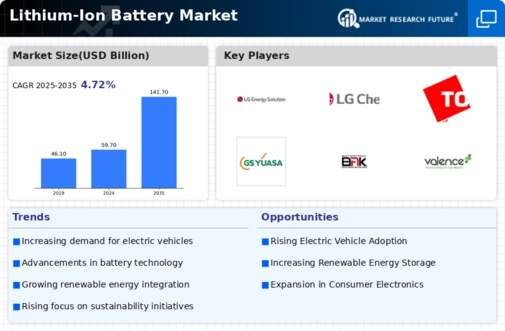
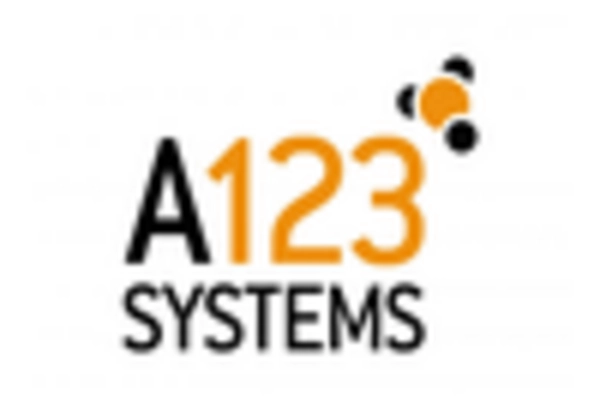
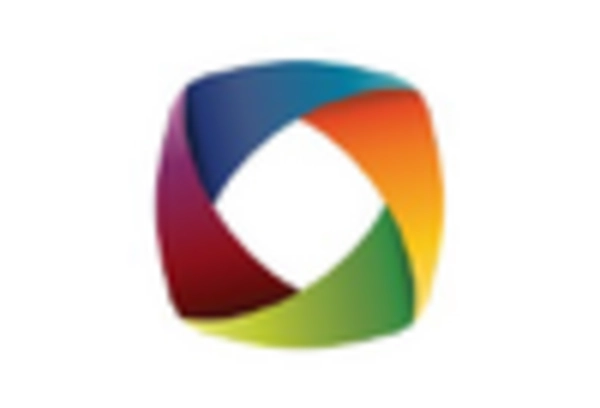

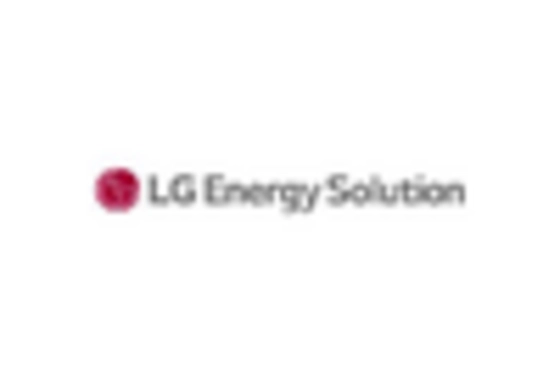
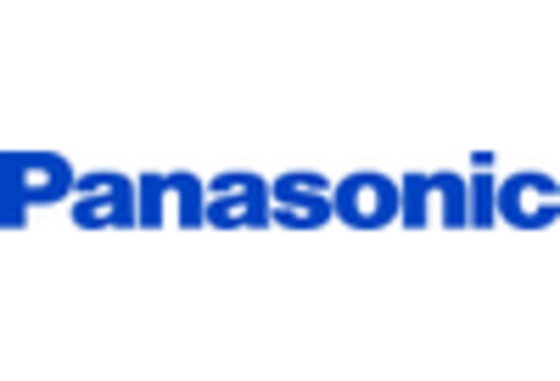
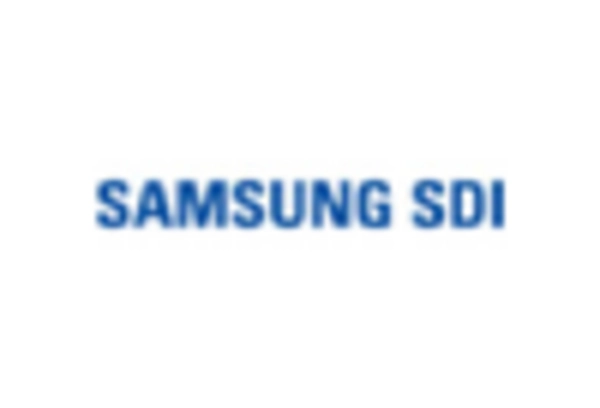









Leave a Comment